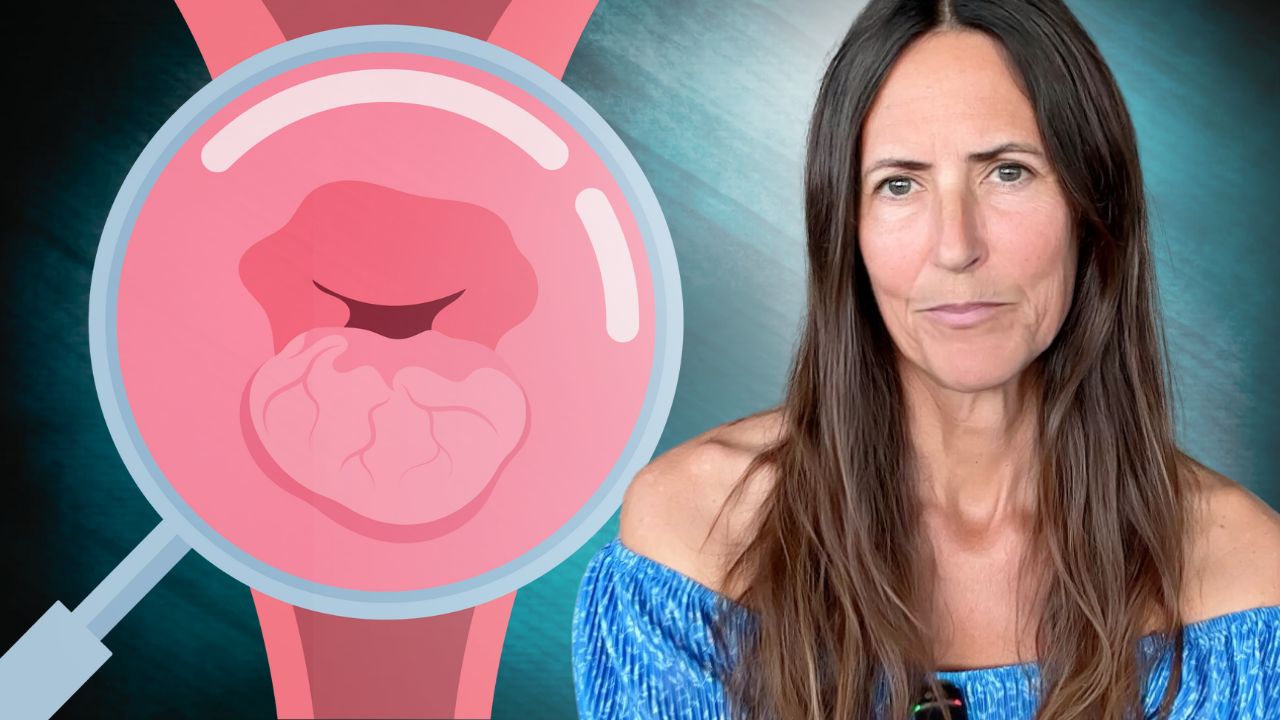Have you ever wondered why you have a cervical polyp and then you got it again? Did it grow back? Was it another one?
Here’s what happened to me.
So this is about two weeks ago, I had a hysteroscopy, which is a procedure to remove a polyp from my cervix. I was there post surgery at the private hospital, just awake from the general anesthesia. My polyp was discovered a week prior to my procedure at a pelvic health exam, and I was told to remove it as soon as possible.
It was not my first time doing this. About six years ago, I went through the same procedure when I was in perimenopause.
I’m currently postmenopause. It’s approximately four years since my last period.
You know, I asked myself… why do I have a polyp again? Why would they reoccur?
And what can I do to avoid getting them in the future?
Because I definitely don’t want to go through this procedure again. I’ll tell you more about it in this video.
If you look at the literature, candidates for cervical polyps may have some sort of hormone imbalance, estrogen dominance, and also inflammation of some sort.
Cervical polyps are more common in women over the age of 20 who have had children, but they are common in women who are in their 40s and 50s.
Premenopause risk of cancer is low, 1 to 2 percent. Postmenopause risk is slightly higher, 4 to 5 percent.
Hence the urgency to remove my polyp and have it examined in a lab.
But first… let’s talk about what is a polyp.
Cervical polyps are small, irregular growths on the surface of your cervix or in your cervical canal. Your cervix connects your uterus to your vagina.
Two types of cervical polyps.
There is the ectocervic polyp, polyps that are developed on the outermost layer of the cervix and open to the vagina.
They can actually hang down like teardrops into the vagina.
Endocervic polyps, polyps that grow in your cervical canal, and this is about a 2 3 cm passage running through the cervix. The endocervix contains glands that secrete mucus, and polyps can develop from these structures. These endocervical polyps are more common.
And just quickly, cervical polyps are DIFFERENT than uterine polyps, or also known as endometrial polyps.
As the name says, they originate from the the tissue present inside the uterus. Endometrial polyps grow inside the uterine cavity.
So what are some complications to watch out for?
Cervical polyps have a vascular core, which means they contain blood vessels.
And the presence of these vessels is what can lead to bleeding after sexual intercourse. Cervical polyps can also become inflamed or infected. In such cases, the patient would notice a change in their vaginal discharge. Some may notice a yellowish discharge.
Polyps that grow especially large can actually block the external opening at the top of the vagina.
And since it is through this aperture that the sperm passes onward into the uterus and fallopian tubes, some obstruction here from the polyp can actually lead to infertility.
Cervical polyps are usually benign or non cancerous, however they can become malignant and that’s why it’s important to have them possibly removed and checked in a lab.
They are often found during a routine pelvic examination or pap test. And the first time I discovered mine, because I had some bleeding. So I went to my doctor to investigate.
My periods were irregular as I was moving toward menopause at that time in my life. And the second time I had a polyp, which is now six years later, it was discovered on a routine exam when I had my vaginal ultrasound.
My doctor alluded to the fact that perhaps one had grown back from the previous ones I had.
In my research, I found reoccurrence or reappearance of growth even after removal is quite possible.
In fact, as many as 12.5 percent or one eighth of all cases of polyectomies and growths are found to reoccur.
In my research, I found that the cause of cervical polyps is not entirely understood, but they may be associated with inflammation, an abnormal response to increased levels of estrogen, or clogged blood vessels in the cervix, and this blockage prevents normal blood flow. I’ll dive more deeply into this later.
So what are the symptoms one may experience?
Symptoms might include abnormal vaginal discharge, white or yellowish in color, irregular menstrual bleeding, bleeding after sexual intercourse, or bleeding after menopause.
But many women with cervical polyps experience no symptoms at all.
Thank you for watching. I hope you found this informative. I’m sharing my journey, my stories, in hopes that this will be helpful for some of you. So please subscribe to my channel, like and share this video. See you soon.
Watch my second video of this series here

















